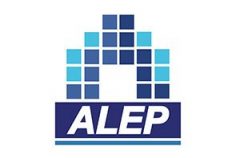Who is responsible for pigeon waste accumulating on a private tenant’s balcony? This answer is not so simple and largely depends on the circumstances.
Problems associated with pigeon waste
Pigeons are creatures of habit and will often return to a property that they have previously visited. Consequently, large amounts of pigeon waste can accumulate, resulting in blocked gutters which cause timber and render damage, ruined decorations and even structural damage for very serious cases. There is also the risk of disease transmission because pigeons are known to carry diseases, including Ornithosis. Therefore, unless you have expertise in pigeon handling, we recommend that any interaction is kept to a minimum where a private rented property is concerned.
Responsibility
The question of who is responsible for dealing with pigeon waste in privately rented properties may therefore depend on:
- Whether there is a contractual provision in the tenancy agreement which assigns responsibility;
- Whether there was a pigeon problem prior to the commencement of the tenancy;
- Whether the pigeon problem has resulted or been exacerbated by some structural or disrepair problem with the property; and
- Whether the pigeon problem has resulted from some act or omission of the tenant.
Inventory
It can therefore be difficult to ascertain who is responsible for pigeon control. Ideally, a full and complete inventory will detail the condition of the property prior to the commencement of any tenancy. Any such inventory may therefore help determine whether the pigeon waste occurred prior to or after the tenancy commenced.
Most pigeon waste matters we have handled usually involve properties which have a balcony. Frustratingly, many inventories either completely ignore the existence of a balcony or say very little about the condition of it. We therefore strongly recommend that where there is a balcony the condition of it is noted in any inventory including the condition of any netting and other animal control measures.
Tenancy Agreement
The tenancy agreement should be reviewed to check whether there is a contractual provision in it which confirms who is responsible for dealing with any pigeon waste or other issues. Most agreements will not specifically refer to pigeon waste but may state ‘pest infestation’ instead. If this is the case then whoever is response for pest infestations should also be responsible for pigeon waste which is caused by an infestation of flying pests!
Landlords have a common law duty to keep properties in good condition and fit to live in. Therefore, if the pigeon problem is caused or made worse due to a structural or disrepair issues then it is the landlord’s obligation to rectify the issue as well as fixing the underlying disrepair. An example of disrepair is where roof tiles are missing and the space is now being used by pigeons who are returning to the property daily. It is worth remembering at this point that a landlord will only usually be held responsible for any pigeon waste caused by disrepair once they have been advised. No duty exists prior to being advised of the problem although that can be complicated in flats.
When did the problem first occur?
If the problem existed prior to a new tenant moving in then landlords/agents should address the issue prior to the commencement date.
If, however the problem occurs due to the tenant’s conduct or omission then the tenant may be responsible for the cost of rectifying the problem. Examples of acts or omissions include leaving food out for pigeons or damaging balcony netting provided by the landlord.
Where next?
Where parties have determined who is responsible for the pigeon waste or even if they have not then the possible next steps are to carry out an inspection, serve notices, contact the local authority to carry out an inspection, or complete necessary remedial works.
HHSRS
A local authority may get involved at the tenant’s request if they believe a landlord is responsible for the pigeon issues. The Housing Health and Safety Rating System under the Housing Act 2004 is a risk based evaluation tool to help local authorities identify and protect against risks and hazards to health and safety from any defects identified in a rented property. Many will be familiar with the HHSRS in respect of HMO properties. A local authority can carry out an assessment as pest infestation is a hazard profile under the HHSRS and take action which will require a landlord to take measures to deal with the problem.
Inspection, Notices and possible remedial works
Landlords should carry out an inspection when advised of a problem and carry out remedial works if they are responsible for the issue. If they face a problem carrying out an inspection or remedial works or they believe that the problem has occurred due to the tenant’s act or omission then the tenant should be served with a Section 8 notice with possible possession proceedings to follow.
Comment
Pest infestations are always difficult. Blame is often hard to apportion between landlord and tenant and frequently both parties share some responsibility for the problem. A good rule of thumb is to consider whether there is a repairing problem which is causing or making the pest infestation worse. If so, then resolution will usually fall to the landlord. If not, then it is likely to be the tenant’s issue to resolve. However, bear in mind that the local authority can force landlords to make improvements under the HHSRS where they believe this will alleviate the issue.

